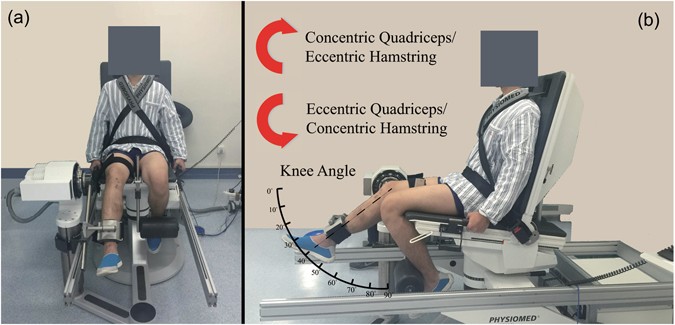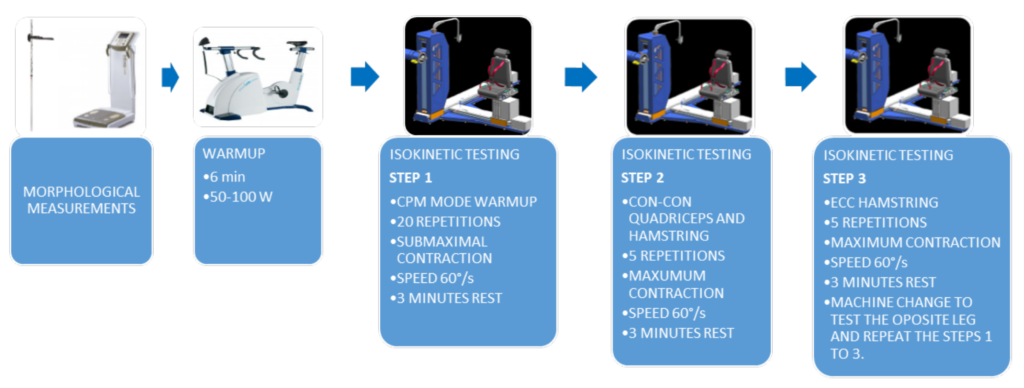Research Reviewed: Isokinetic strength assessment offers limited predictive validity for detecting risk of future hamstring strain in sport: a systematic review and meta-analysis. Green et al, BJSM 2017
Hamstring strain injuries (HSI) are all too common amongst sports that require high velocity and force, including sprinting, kicking, and prolonged high-speed runs. A common assessment tool used to try and predict hamstring injuries is isokinetic testing.
Here’s what those machines look like:

Enjoying the post? Sign-up for instant inbox access
Just enter your email below to get the latest blog updates delivered straight to your inbox. Every post is researched and written by Dr. Rajpal Brar, DPT.
By submitting this form, you are consenting to receive marketing emails from: . You can revoke your consent to receive emails at any time by using the SafeUnsubscribe® link, found at the bottom of every email. Emails are serviced by Constant Contact
And here’s an example of an isokinetic testing protocol:

Research has been mixed on the effectiveness of isokinetic testing in predicting HSI with some studies finding no predictive ability and other studies finding some with narrow parameters. The researchers in this paper parsed through 595 studies (a systematic review and meta-analysis) to clarify the answers.
They found that of all the testing protocols (knee flexor, extensor, or hip strength at angular velocities between 30-300 degrees/s, concentric or eccentric, or relative (to weight) or absolute), the only measures that showed a predictive effect on hamstring injury risk were absolute and relative eccentric knee flexor strength at 60 degrees/second.
No other testing speed or strength ratio showed any association (including quads to hamstrings ratio which is often cited as key hamstring injury risk factor) and over half of the variables had moderate to strong evidence that they had no predictive ability for future hamstring injuries.
Practically, isokinetic testing doesn’t do much when it comes to predicting hamstring injury. Further, one isolated measure with predictive ability isn’t nearly enough to justify the costs and specialized training that is required with these machines. There’s much more cost-effective and accurate ways – that’s for a future piece.
If you want to work with us, then please fill out the contact form below. If you appreciate the work and want to support, head over to our Patreon. Thank you for reading and thank you for your time.
Dr. Rajpal Brar, DPT, (@3cbperformance) is a physiotherapist, movement expert, strength and conditioning/fitness coach, sports scientist and mindfulness coach. He runs the LA and online based physiotherapy and athletic performance clinic 3CB Performance and you can subscribe to his Youtube channel (which posts a variety of sports injury, performance, and fitness related content).